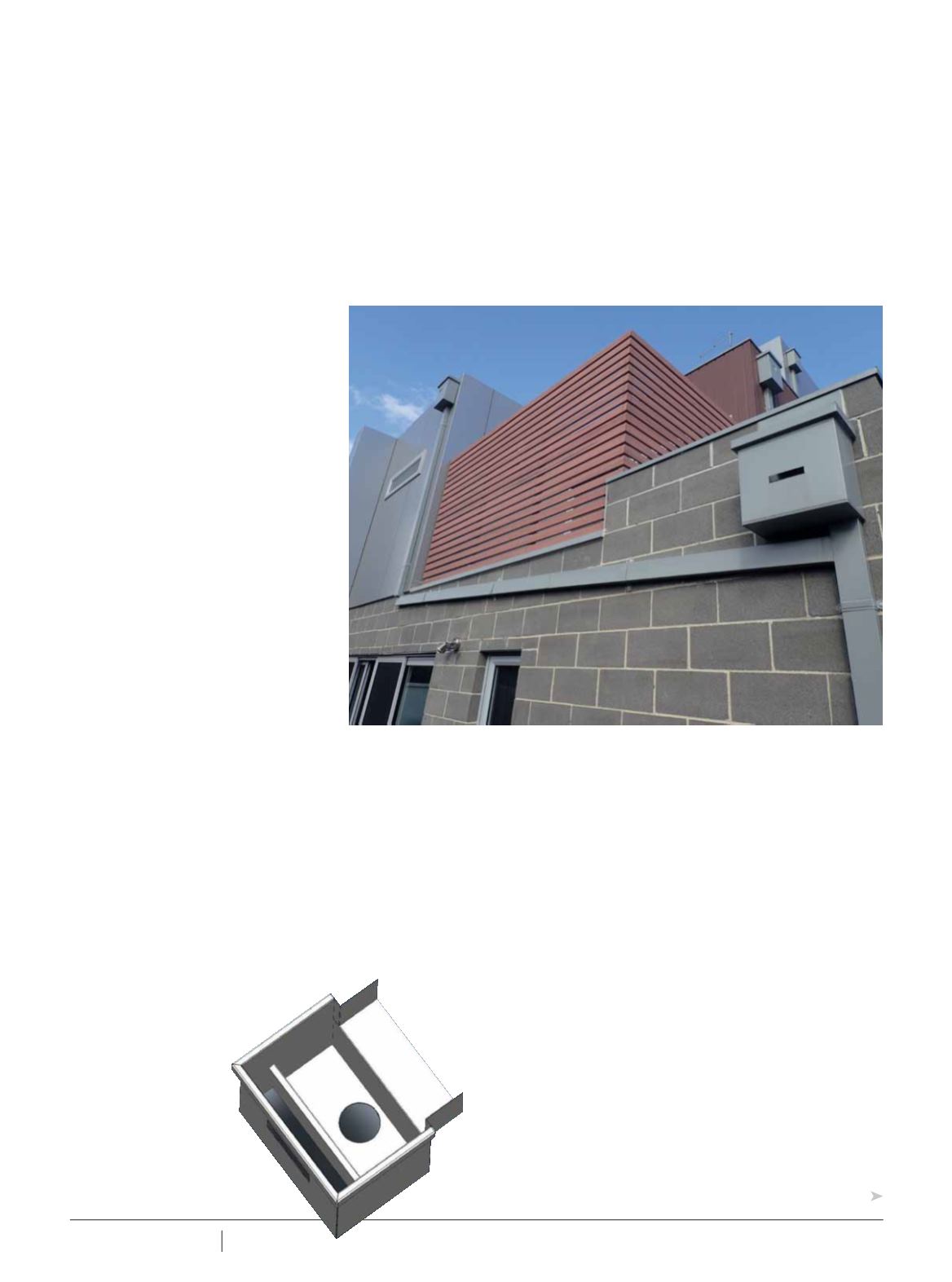

5 2
PLUMBING CONNECTION Summer 2017
DAM BUSTER SOLVES THE BOX
GUTTER RAINHEAD
T
ired of seeing box gutter
rainheads across Australia
that just didn’t comply with AS/
NZ3500.3, a team of plumbing industry
experts came together to resolve the
issue.
Too often in the roofing industry,
plumbers are installing rainheads
that simply don’t perform, requiring
‘solutions’ to make them work, such as
tin snipping in overflow holes, removing
components or altering the overall
product. In many cases, the end result
is still non-compliant but also an ugly
fixture that can cause overflow flooding
inside the building, creating insurance
headaches for the owner and occupants.
The launch of the Dam Buster box
gutter Rainhead means Australian
roofing plumbers can now install an ‘off
the shelf’, fully ASNZS3500.3 compliant,
simple to fit rainhead that meets the
‘deemed-to-satisfy’ requirements of
the Plumbing Regulations .
Designed to perform under the
most extreme conditions, including
one-in-one-hundred year rain events
mandated under the Standards, the
Dam Buster Rainhead features an
inbuilt overflow weir and overflow chute
to allow a free flow of water away from
the box gutter and roof installation even
with the downpipe obstructed.
“It shouldn’t be a surprise to the
industry, but 95% of all rainheads
installed on buildings in Australia
are non-compliant,” says Peter
Coll, general manager of
Johnson Roofing, and
PC’s roofing expert.
“The reasons can
vary from the position
it is installed in to the
lack of provision for
overflow.”
“Most rainheads don’t look
like the one in the Standards,
because from a cosmetic point of view,
customers don’t accept it because you
see too much of the box gutter behind it.
“The aesthetics issue has been
resolved with the Dam Buster design –
I’m kicking myself for not having seen
the simplicity of the design.”
Currently the Standards require a
rainhead to be similar to the one
in the specification diagrams
of AS/NZS3500.3: HB-114,:
and HB- 39. The description
by the Victorian Building
Authority states:
“The width of the
rainhead is to be
at least equal to
the width of the
box gutter and the
box gutter needs to be
sealed to the rainhead.
The hydraulic capacity of the overflow
device must be no less than the design
flow for the associated box gutter outlet.
Overflow devices need to discharge
to the atmosphere in such a way as
to prevent damage to buildings and
property.”
The design developed by Dam Buster
features an overflow weir toward the
forward face of the rainhead, beyond
the downpipe outlet in alignment with
the box gutter outlet. Across the front
of the rainhead is a fascia that has
a pre-cut egress point (circular or
rectangular) for unusually high water
flow. Between the weir and the front
face of the downpipe is an overflow
chute sufficient to provide the overflow
provision required in AS/NZS3500.3.
This fascia gives a more attractive
appearance to the overall rainhead.
1RQ FRPSOLDQW SRRUO\ ¿WWHG RU µUHWUR ¿[HG¶ ER[ JXWWHU UDLQKHDGV DUH WKH EDQH RI URRIV RIWHQ FDXVLQJ
FDWDVWURSKLF DQG QXLVDQFH ÀRRGLQJ
Deborah Andrich
LQYHVWLJDWHV
Many housing estates have upwards of five rainheads - most of which are not
compliant
ROOFING
















